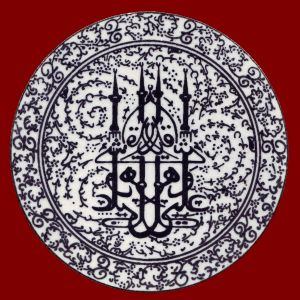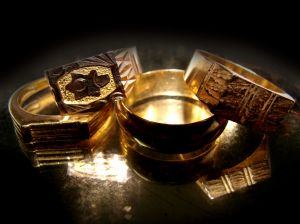 Although Cairo means “the vanquisher” or “the triumphant,” Cairenes refer to their city as umm el dunya—“the mother of the world.”
Although Cairo means “the vanquisher” or “the triumphant,” Cairenes refer to their city as umm el dunya—“the mother of the world.”
Each year, millions of travelers flock to the Pyramids of Giza, Sphinx, and Khan el-Khalili spice market.
Indeed, Cairo offers you a glimpse of pyramid silhouettes at sunset, Pharaonic mystery and intrigue, and countless hieroglyphs.
But, after you have traipsed around the pyramids, explored the Egyptian Museum, and ridden a camel until you can no longer bear it, why not explore some of our off-the-brochure suggestions?
MUSEUMS
Overshadowed by the throngs of tourists visiting the Egyptian Museum, few travelers visit the Museum of Islamic Art. It’s quite a shame because this museum has one of the world’s greatest collections of Islamic art. Here, you can see woodwork, coffered ceilings, metal work, and Mamluk weaponry. In the room for “masterpieces,” you can find the door that once belonged to the Sayyida Zeinab mosque. The museum also displays ornate Qur’ans once owned by King Farouk and a Mamluk sunken fountain. 352 Ahmed Maher Sq. Bab El-Khalq, (20 2) 390 1520
 If you like ceramics, visit the Museum of Islamic Ceramics. This museum has over 300 artifacts, dating between the 10th to 19th centuries AD, and on display are tiles, bowls, vessels, jars, tiles, mugs, jugs, plates, pitchers, vases, lanterns, etc., and the museum, itself, is a masterpiece: a 1920s, neo-Islamic summer palace built for Prince Amru Ibrahim. The collection is located at the Gezira Art Centre, 1 Al-Sheikh Al-Marsafi Street, Zamalek. (20 2) 737 3298.
If you like ceramics, visit the Museum of Islamic Ceramics. This museum has over 300 artifacts, dating between the 10th to 19th centuries AD, and on display are tiles, bowls, vessels, jars, tiles, mugs, jugs, plates, pitchers, vases, lanterns, etc., and the museum, itself, is a masterpiece: a 1920s, neo-Islamic summer palace built for Prince Amru Ibrahim. The collection is located at the Gezira Art Centre, 1 Al-Sheikh Al-Marsafi Street, Zamalek. (20 2) 737 3298.
In the 1930s, the Egyptian government decided to create an agricultural museum, and rightfully so, because agriculture significantly affected Egypt’s history. The Agricultural Museum in Cairo—the world’s oldest agriculture museum—has several halls, including the museum of bread, which displays information on bread in Egypt since ancient times. Another hall, The Museum of Plant Wealth, contains field and orchard items. Some of the most bizarre items are a giant plastic fruit, stuffed birds, and a pharaonic-era mummified bull from Memphis. The museum’s grounds cover about 78 square miles, and gardens containing trees, bushes, rare plants, green areas, and greenhouses occupy 15 percent of the grounds. Al-Sawra Street, next to the Ministry of Agriculture, (20 2) 360 8682/1
EYES OF NEFERTITI

For any ladies reading this, if you covet the sultry, iconic eyes of Nefertiti or Cleopatra, make sure to load up on kehal (English-speakers might know it as kohl)—the powdery charcoal substance used for eyeliner.
Kohl is made from a mixture of gum and soot and has been used in Egypt for over 3,000 years, since the reign of the pharaohs. It is thought that they wore kohl as eyeliner due to their worship of cats and cows (cows have dark-rimmed eyes). Kohl is sold in bulk as spice markets, such as Khan el-Khalili, but it is mass-produced with cheaper minerals, and it may or may not be lead-free.
So, if you want to find kohl as close to the ancient tradition as possible, visit Nefertiti body products. Dr. Mona Erian has kept the ancient tradition of handmade kohl alive by starting this beauty company, and she drew inspiration from her very own family recipe, which has been passed down from generations. (20 2) 336 7181, www.nefertaribodycare.com
PERFORMING ARTS
The only country in the Middle East to have a residential classical ballet company is Egypt: the Cairo Ballet Company. About forty years ago, Egypt’s Ministry of Culture invited Russian masters to train native ballerinas and dancers. The company has 150 full-time students, and it not only performs the classics like Giselle, The Nutcracker, and Swan Lake, but it also performs contemporary ballets inspired by Egyptian music composers and choreographers. (20 2) 739 0114.
PURCHASING GOLD
 Cairo is a very affordable place to buy gold. A well-known market is El Hussein, and although it is more on the brochure, it is a very reputable place for purchasing gold. Here, you can find pharaonic-styled jewelry. Of course, most travelers buy cartouches (pendants engraved with hyroglyphics), and the most famous cartouche maker is Mihran and Garbis Yazejian Jewelers (8 Khan al-Khalili, (20 2) 591-2321). Since this jeweler shop is a no-bargaining shop, be sure to shop around and compare prices before settling on one. Also remember: Egyptian gold usually is a higher carat than the gold found in the West, so it is darker in color. Here are some bargaining tips when visiting bazaars:
Cairo is a very affordable place to buy gold. A well-known market is El Hussein, and although it is more on the brochure, it is a very reputable place for purchasing gold. Here, you can find pharaonic-styled jewelry. Of course, most travelers buy cartouches (pendants engraved with hyroglyphics), and the most famous cartouche maker is Mihran and Garbis Yazejian Jewelers (8 Khan al-Khalili, (20 2) 591-2321). Since this jeweler shop is a no-bargaining shop, be sure to shop around and compare prices before settling on one. Also remember: Egyptian gold usually is a higher carat than the gold found in the West, so it is darker in color. Here are some bargaining tips when visiting bazaars:
- If a shopkeeper offers tea, feel free to accept it. You will not be obligated to make a purchase, and it is a nice custom to enjoy;
- Begin bargaining by halving the first asking price;
- Bargaining is supposed to be fun, so remain polite and have a sense of humor;
- Walking away will usually encourage the shopkeeper to quickly lower the price; and
- Convert the asking price into your own currency because you may end up haggling over what may be a few pennies.
RELIGIOUS SITES
Although Islam is the primary religion practiced in Egypt, Christianity was once the dominant religion for 300 years—from the fall of the pagan Romans until Islam took hold.
Today, approximately 8 to 10 percent of the Cairenes are Christians, and most of them belong to the Coptic Orthodox Church. Many Coptic churches in Cairo are not easily noticed because they are not found on main streets, and many of them have non-embellished entrances.
If you want to avoid the crowds, don’t visit on Sundays or religious holidays. The Church of Mari Girgis is a Greek Orthodox church which dates back to the 6th century (it was renovated in 1909). Inside, you can find some of the best-preserved icons. The church claims to have possession of the chains used to torture St. George, and a small doorway leads you to a room where you can actually try on the chains. The Church of the Holy Virgin was built in the 8th century and is a one-room chapel with rare icons, painting, and three alters. And, the Chamber of St. Barsoum is where the saint was said to live with a cobra—not his wife—for 25 years.
By Monique-Marie DeJong for PeterGreenberg.com.
For more cities, check out our Off the Brochure Travel Guide Series with this map:
View Off the Brochure Maps in a larger map












